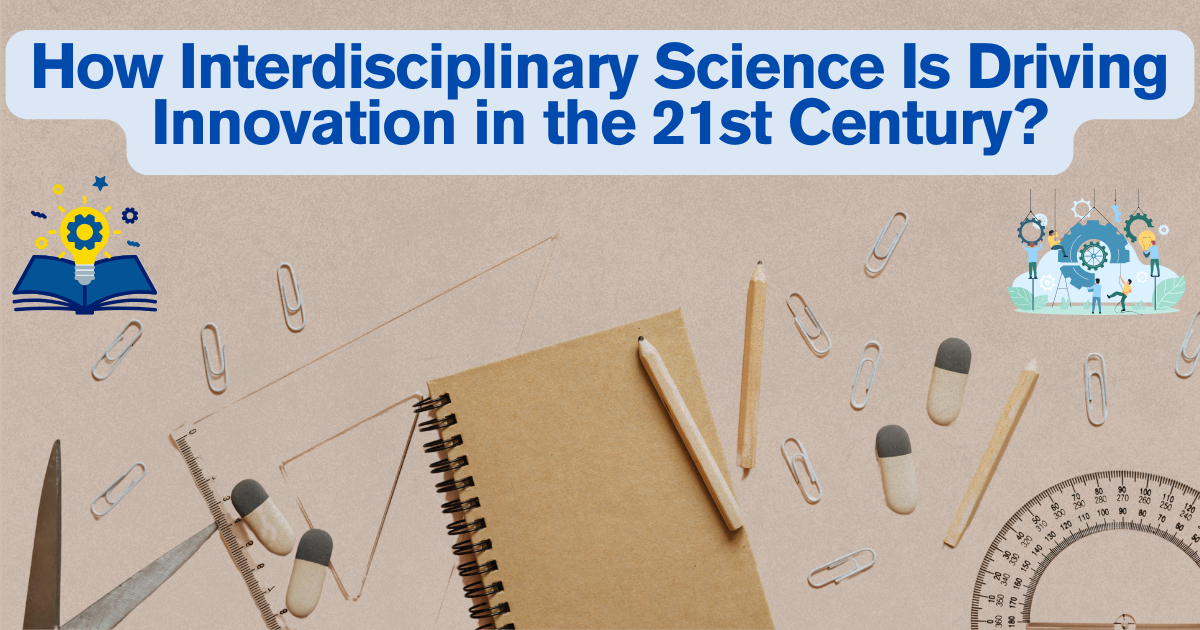How Interdisciplinary Science Is Driving Innovation in the 21st Century. Interdisciplinary Science is the combination of different scientific disciplines to handle some of the world’s most pressing challenges. It is driving innovation among individuals in the 21st century. As we know, students in the present era need more depth in their education, which can be provided by interdisciplinary science. To know more about the topic “How Interdisciplinary Science Is Driving Innovation in the 21st Century,” read the complete article.
How Interdisciplinary Science Is Driving Innovation in the 21st Century
Interdisciplinary Science is the combination of different scientific disciplines to handle some of the world’s most significant challenges. Interdisciplinary sciences combine courses in biology, chemistry, physics, geology, math, computer science and psychology. Interdisciplinary science is also when the principles and methodologies from different science subjects are used to contribute to a research project.

Interdisciplinary education motivates critical thinking and problem-solving skills. When students are exposed to a range of different perspectives and approaches, they are forced to think beyond their own discipline and consider alternative solutions. This can result in more creative and effective problem-solving, as well as a greater appreciation for the complexity of real-world issues.
Key Advantages of Interdisciplinary Science
Identifying Complex Problems
Most of the complex global problems do not fit within the boundaries of a single subject. Problems like global health crises, cyber security and urban development require input from multiple fields. For example, reacting to a pandemic involves not just virology and medicine but also public policy, economics, and psychology to control its spread, economic impact and societal behavior.
Promoting Innovation
Interdisciplinary promotes innovation by mixing diverse knowledge and perspectives. technological advancements, such as Artificial Intelligence (AI), often arise from the convergence of computer science, cognitive psychology, linguistics, and ethics. This combination creates innovative applications that would not be possible within the confines of a single discipline.
Collaboration and Adaptability
Students learn to collaborate across disciplines, fostering teamwork and communication skills critical in today’s workplace. The integration of diverse subjects equips students to adapt to the evolving demands of careers and industries. The modern job market increasingly values individuals who can think critically, solve complex problems, collaborate effectively, and adapt to new situations.
Enhancing Education and Research
Interdisciplinary education allows students to think deeply and creatively, enabling them for careers in a world where adaptability and problem-solving are essential. In research, interdisciplinary collaboration results in revolutionary discoveries, such as the human genome project, which needed the integration of genetics, computer science, mathematics, and bioethics.
Practical Applications of Interdisciplinary Learning
Interdisciplinary learning is already transforming education worldwide. Here are some real-world examples:
STEM to STEAM
The STEAM movement (Science, Technology, Engineering, Arts, and Mathematics) illustrates successful interdisciplinary integration. By including arts in traditional STEM education, STEAM programs develop students’ creative problem-solving abilities along with technical skills.
Sustainability Studies
Programs that combine environmental science, urban planning, and policy-making teach students to create sustainable cities. Combining climate science, materials engineering, conventional building methods, and contemporary design is necessary to create structures that can endure shifting environmental conditions.
Health Informatics
Combining medicine, computer science, and data analytics results in advancements in patient care and public health management.
Business and Design
The blending of business thinking and design methodology has modified product development and customer experience. Companies like Apple, AIrbnb, and Nike have shown the competitive advantages of design thinking—an interdisciplinary approach that mixes empathy, creativity, and rationality to meet user requirements.
Challenges in Interdisciplinarity
Interdisciplinarity has many benefits, but there are a few challenges also:
Communication Gaps
Different disciplines develop specialized vocabularies, methodologies, and communication norms that can impede collaboration. Effective interdisciplinary collaboration requires overcoming these communication barriers, which can be time-consuming and challenging.
Lack of Resources
Implementing interdisciplinary learning needs important resources:
- Time for faculty to develop integrated curriculum
- Physical spaces designed for collaborative work
- Flexible scheduling to accommodate team-based learning
- Professional development for educators from different backgrounds
- Assessment tools that evaluate interdisciplinary competencies
Evaluation and Recognition
Interdisciplinary research may be challenging to assess using traditional metrics, which commonly prioritize disciplinary depth over breadth. Researchers may face difficulties in getting recognition and funding for interdisciplinary work.
Balancing Depth and Breadth
Interdisciplinarity demands a balance between deep expertise in a specific field and broad knowledge from various disciplines. Attaining this balance can be challenging, as it requires plenty of time and effort to develop expertise in numerous areas.
